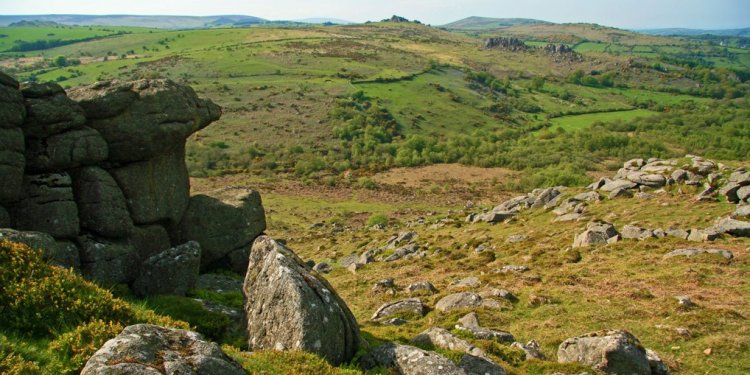
Landscape Balloch England
Phytophthora lateralis (P. lateralis) is an intense water mould, a fungus-like pathogen which affects, mainly, Lawson cypress woods (Chamaecyparis lawsoniana). It usually strikes and spreads through the origins of its host woods (see 'vulnerable types' below), girdling the source collar, causing rapid decrease and loss of the plant.
Additionally, there are genetic lineages which have been found become effective at causing part dieback, having been sent aerially in liquid droplets.
It has additionally been reported causing foliage infections on nursery plants of north white cedar (Thuja occidentalis), as well as in the wider environment on Sawara cypress (Chamaecyparis pisifera) and western red cedar (Thuja plicata).
Considered to originate in Asia (an inherited lineage has been within Taiwan), P. lateralis may be the main reason for death of Lawson cypress woods in their native range when you look at the western Coast area of North America. Outbreaks are also taped in France, the Netherlands together with Republic of Ireland.
The pathogen was first detected in broader environment in the united kingdom this year, and contains because already been discovered infrequently in England and Wales, plus frequently in Scotland and Northern Ireland. Infection internet sites include forest really stands, windbreaks, parkland and exclusive landscapes.
The essential likely supply of the outbreaks in the UK is the importation of infected flowers from neighbouring europe – four confirmed outbreaks on mature woods in the united kingdom are on nursery web sites or alongside garden centres or plant sales areas. There have been reported results of P. lateralis on plants in nurseries within the Netherlands, Belgium, France and UNITED KINGDOM.
Susceptible species
Identified mostly on Lawson cypress, P. lateralis has additionally been based in the British on western purple cedar, northern white cedar and Sawara cypress. Nevertheless. its host range also includes other members of the Cupressaceae household in addition to Pacific yew, juniper, periwinkle and petunia. It has also already been within earth in nurseries connected with cyclamen, marigold and pomegranate. Although reported on rhododendron, azalea, photinia and kiwifruit plants, these might have been misdiagnoses of comparable phytophthoras.
Additionally, Alaskan cedar (Cupressus nootkatensis) and Douglas fir (Pseudotsuga menziesii) have-been discovered is susceptible in experimental conditions.
Signs
The vegetation of infected Lawson cypress trees at first transforms a pale-green, after that a reddish-brown once the tree dies. As the pathogen runs from origins and root collar up the trunks of affected trees, tongues of darker-coloured lifeless phloem (observable by detatching the outer bark) become noticeable, contrasting with paler, healthier structure. The whole trunk can be girdled, ultimately causing the tree’s death. Disease symptoms caused by P. lateralis is confused with those of other infections, such as those due to Phytophthora cambivora or Armillaria spp, that are endemic toward British.
Distribution
 Large-size chart (PDF)
Large-size chart (PDF)
Outbreaks of disease were confirmed in Lawson cypress woods in South-West The united kingdomt, Yorkshire, Scotland and Northern Ireland. The initial instance was identified in the united kingdom in 2010 at Balloch Castle Country Park in West Dunbartonshire, Scotland. In which positive cases are identified, infected woods are damaged therefore the area monitored. The illness is many widespread on western side of Central Scotland.
In Scotland, P. lateralis has also been present in 2014 in one western purple cedar at Bridge of Allan, Stirling, as well as in 2013 on Sawara cypress near Tarbert in Argyll.
Reputation
P. lateralis just isn't listed in the European Union’s Plant Health Directive.
Exactly how it develops
Under EU phyto-sanitary (plant health) legislation, imports of Chamaecyparis tend to be prohibited from non-EU countries. Not surprisingly, P. lateralis joined the EU, possibly on other host types that are not prohibited, like Pacific yew (Taxus brevifolia), or on earth associated with non-host flowers originating in areas where the pathogen takes place.
The condition spreads whenever tree roots touch P. lateralis spores within the earth or liquid. Growing infected flowers, or using soil that is harbouring spores, are fundamental pathways for introducing the condition onto brand-new internet sites. When present in a location, spores from contaminated trees may also be spread in water run-off, or transmitted on footwear.
We don't know how P. lateralis experienced the UK, nevertheless the likely path is it joined on brought in, containerised flowers. We have not been able to verify the paths by which the pathogen got to these particular web sites, even though the fact that various genetic lineages associated with the pathogen are present at geographically close web sites (in other words. Balloch and Greenock) implies that split, independent introductions have happened.
Impact
P. lateralis is a virulent pathogen which will kills the trees it infects, primarily Lawson cypress. Couple of trees cure an attack.
Lawson cypress is available through the entire UK, so we think P. lateralis is capable of surviving throughout components of the united kingdom. We estimate you can find less than 2200 hectares of Lawson cypress growing in woodland in the united kingdom. But Lawson cypress and its own numerous colourful cultivated types are well-known for amenity sowing in parks and home gardens, and are usually one of the most crucial conifers in the united kingdom decorative plant trade. This implies it could express a threat on decorative plant business if it became founded right here.
P. lateralis additionally affects various other cypress types and Pacific yew, an in depth relative of Britain's indigenous common yew (Taxus baccata). Its recent confirmation in western purple cedar in the UK suggests it might show a risk on woodland industries, with about 1000 hectares of red cedar developing in public places woodlands.

















